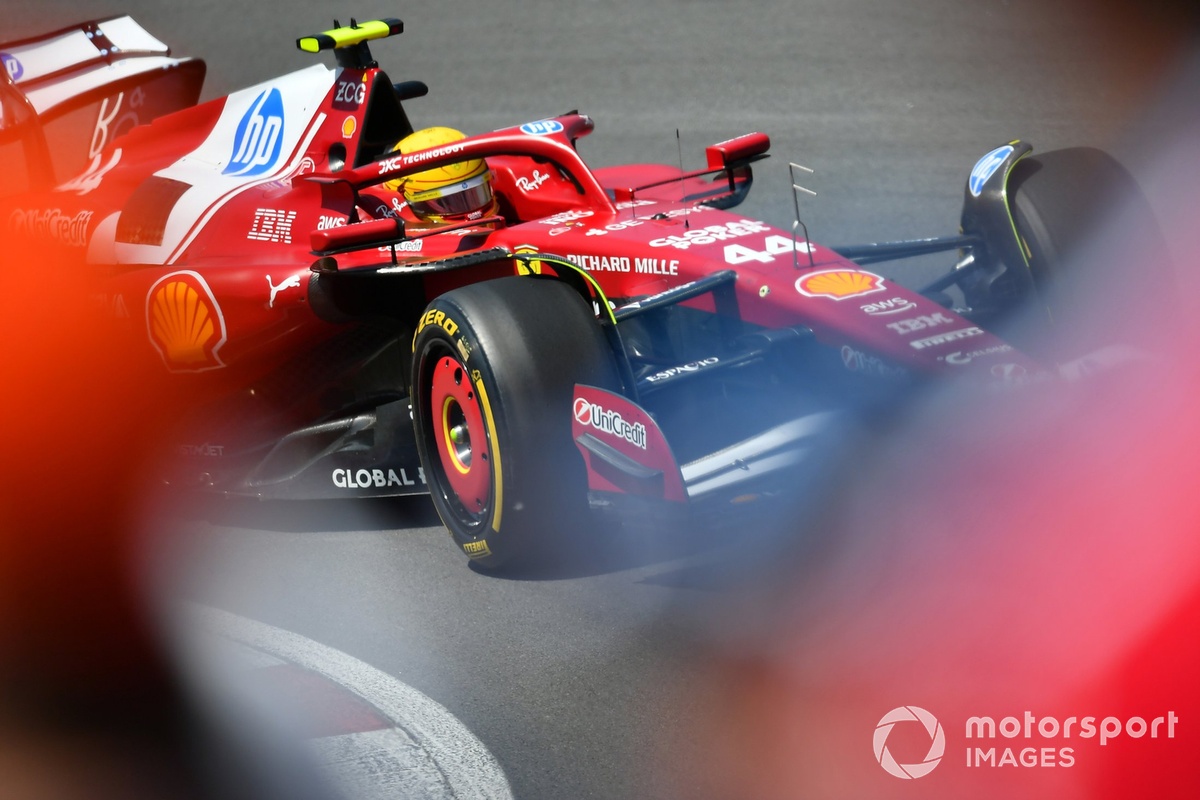Lewis Hamilton’s Vision for the 2026 Ferrari: Shaping the Future with His “DNA”
As the 2025 Formula 1 season moves past its halfway mark, attention is shifting toward preparations for the upcoming year and a major regulatory overhaul. Among the key figures in this transition is Lewis Hamilton, who has expressed a desire to infuse his own “DNA” into the next Ferrari car. But what exactly does this mean for the team and the future of the 2026 model?
The gap between the British Grand Prix and the Belgian Grand Prix offers a perfect opportunity to assess both the current state of affairs and the direction of the sport. With one of the most significant technical transformations in Formula 1 history on the horizon, the connection between present challenges and future developments becomes increasingly apparent.
At Ferrari, this connection is particularly relevant as the team seeks to turn around a season that has not met expectations. The work done now will serve as the foundation for the 2026 car, which is still in the early stages of development. While the project is not yet advanced, it is at a critical phase where fundamental design decisions are being made.
This period is not only about addressing short-term issues but also about laying the groundwork for long-term success. Each driver brings valuable experience, especially those from teams that have consistently performed at the top. For Hamilton, this means contributing to the 2026 car in a way that reflects his personal style and insights.
Addressing Inconsistencies in the Current Ferrari Car
Hamilton’s 2025 season has been marked by inconsistency, partly due to a lack of connection with the car. These limitations—both technical and emotional—are shaping his approach to the 2026 project. He wants to bring his unique perspective to the design and development process.
Some of the issues stem from structural features of the SF-25, which require careful evaluation to improve performance. Others are more related to individual preferences and adaptation challenges. This is a common process, seen with drivers like Carlos Sainz and Nico Hulkenberg, who have requested changes to power steering and throttle systems.
Power steering has been a particular focus for Hamilton since his early days with Ferrari. Beyond the adjustments made after Silverstone, which may be linked to a suspension layout change, he has asked for targeted modifications based on his personal needs and the challenges of adapting to a new environment.
It is important to distinguish between structural problems that affect all drivers and subjective preferences that are specific to individual drivers. Steering setup, for instance, is highly personal. Every driver has their own preferences, which often become clear when switching teams and experiencing different lateral forces on the track.
Adapting to the SF-25: A Challenging Balance
The SF-25 has proven to be a difficult car to balance, leading Charles Leclerc to adopt extreme setup solutions, especially in how he exploits the front end and compensates at the rear. Hamilton has tried various approaches to adapt, some of which have been more effective than others. Gradually, he has started to align more closely with Leclerc’s choices.
“I tried all the other directions that should theoretically work, but for some reason they didn’t. So gradually I’ve gotten closer and closer to how Charles sets up the car,” Hamilton said. “Last week [in Austria] was when I got the closest, and our race pace was also the most similar. But it’s still difficult. It’s a tricky balance, and the driving isn’t comfortable.”
Despite these challenges, the adjustments have improved Hamilton’s qualifying speed, narrowing the gap to his teammate. However, race pace still suffers, particularly as tire grip decreases.
Stability and Performance: Key Areas for Improvement
Stability remains a key area that needs improvement, both now and for the future. Leclerc has been working with a car that is slightly oversteery, and this approach has worked well. Recently, Hamilton has moved in that direction and is making it work. According to Ferrari deputy team principal Jerome d’Ambrosio, this is a result of the current regulations, which create instability at corner entry.
“There are two phases, and I don’t think they’re entirely separate. Generally, there are overall balances in the car that generate performance. Then there’s a second phase involving the details – a phase where you absolutely must listen to the drivers,” d’Ambrosio explained.
Preparing for the 2026 Car: Flexibility and Driver Input
While some aspects can be improved in the short term, others require time, especially with the 2026 car in mind. The goal is not just to go in one specific direction but to have more operational flexibility. For example, Hamilton has pointed out issues with the brakes and engine braking, which he finds too aggressive compared to his experience at Mercedes.
In developing a new car, engineers seek performance through design to meet set goals for downforce and drag. The driver’s input helps identify areas where more flexibility is needed, guiding the development process based on experience.
Hamilton is trying to give the 2026 Ferrari his “DNA,” not just technically but also in terms of working methods. With a packed calendar, factory drivers often test the following year’s car in the simulator relatively late, unless there is a major regulation change. In such cases, feedback arrives earlier, but mostly at a conceptual level.
“We listen to the drivers’ input. Not just one driver, both. It’s actually interesting, because during factory meetings, it often turns out the drivers arrive at very similar requests, conceptually, about what they need from the car,” d’Ambrosio said.
By focusing on both the technical and human elements of development, Ferrari aims to ensure that the 2026 car is not only competitive but also adaptable to the unique styles of its drivers. This approach reflects a broader shift in the sport, where driver input plays an increasingly important role in shaping the future of Formula 1.







